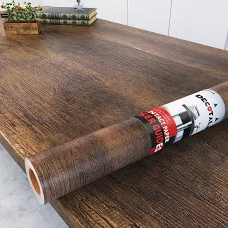- Home
- Durable Adhesive Paper for Stylish Cabinet Door Makeover
Sep . 27, 2024 19:51 Back to list
Durable Adhesive Paper for Stylish Cabinet Door Makeover
Transforming Your Cabinets with High-Quality Contact Paper
In today's world, home improvement projects can often feel overwhelming, especially when it comes to updating the look of your cabinetry. One of the most cost-effective and transformative ways to breathe new life into tired cabinet doors is by using high-quality contact paper. This versatile material not only comes in an array of designs and textures but also offers a simple application process that can dramatically change the aesthetic of your kitchen or bathroom.
What is Contact Paper?
Contact paper is a self-adhesive material often used for shelving, crafting, and home décor. Made from vinyl or other durable materials, it is available in various patterns, colors, and finishes, including wood, marble, and solid colors. Its versatility and ease of use make it an ideal choice for updating furniture and cabinetry without the need for professional help.
Why Choose High-Quality Contact Paper?
When considering a project like cabinet door covering, opting for high-quality contact paper is crucial. Lower-quality options may peel, fade, or tear over time, leading to a lackluster finish. High-quality contact paper, on the other hand, is designed to withstand wear and tear, ensuring your cabinets maintain their fresh appearance for years to come. Additionally, premium contact paper often features better adhesive properties, allowing it to stick firmly to the surface while being easy to reposition during application.
Preparing for Application
Before diving into your project, proper preparation is key to achieving the best results. Start by removing the cabinet doors from their hinges. This will give you easier access for applying the contact paper and allow for a more precise finish. Next, clean each surface thoroughly with soap and water to remove dirt, grease, and grime. Dry the surfaces completely before proceeding.
How to Apply Contact Paper
high quality contact paper to cover cabinet doors

1. Measure and Cut Measure the dimensions of your cabinet doors and cut the contact paper accordingly, leaving a little extra on each edge to ensure complete coverage.
2. Application Begin at one edge and carefully peel back the backing of the contact paper. Align it with the edge of the cabinet door and gently press it down, smoothing it out with a flat tool or your hands as you go. This will help eliminate air bubbles, which can mar the final appearance.
3. Trimming Once the paper is firmly in place, trim any excess material along the edges using a sharp utility knife for a clean finish. If you encounter any bubbles, you can poke them with a pin and smooth them out with a softer cloth.
4. Finishing Touches After applying the contact paper, reattach the cabinet doors to their hinges and step back to admire your handiwork. Consider updating hardware like knobs and handles to further enhance the new look.
Benefits of Using Contact Paper
One of the most significant advantages of using high-quality contact paper is its affordability. If you're looking to renovate your kitchen or bathroom without breaking the bank, this is an excellent solution. Moreover, the non-permanent nature of contact paper allows you to experiment with different styles or colors, making it easy to change if your preferences shift in the future.
Additionally, contact paper is easy to maintain. Depending on the finish you choose, a simple wipe with a damp cloth is often sufficient to keep your newly decorated cabinets looking pristine. This low-maintenance aspect is a boon for busy households.
Conclusion
In summary, high-quality contact paper offers a creative and economical way to update cabinet doors in your home. With a vast selection of styles and colors at your fingertips, the possibilities are endless. Whether you want a trendy modern look or a classic wood finish, contact paper allows for personal expression and interior transformation without the need for expensive renovations. So gather your supplies, unleash your creativity, and get ready to transform your cabinetry today!
Latest news
-
High-Quality Bathroom Cabinet Contact Paper – Durable & Stylish Leading Suppliers, Exporters, Manufacturers
NewsJul.08,2025
-
Premium Wood Contact Paper for Desk – Reliable Suppliers & Exporters
NewsJul.08,2025
-
Premium Contact Paper for Table Top – Durable & Stylish Surface Solution from Leading Manufacturer
NewsJul.07,2025
-
Duplex Board with Grey Back - Reliable Supplier & Competitive Price Manufacturer & Exporter
NewsJul.07,2025
-
Premium White Contact Paper on Cabinets – Trusted Exporters & Suppliers
NewsJul.06,2025
-
High-Quality Duplex Board Packaging for Food Reliable Manufacturer & Supplier
NewsJul.06,2025

